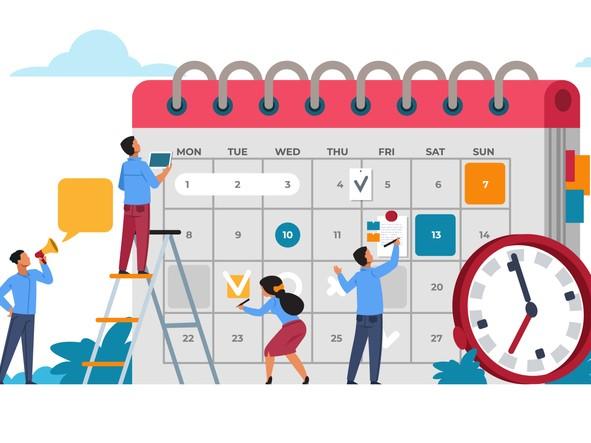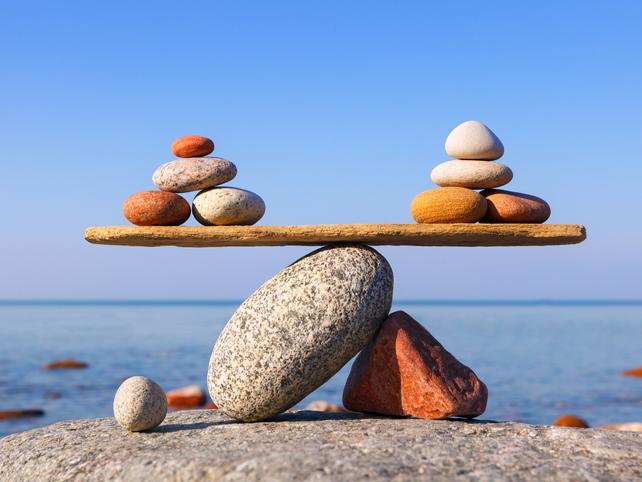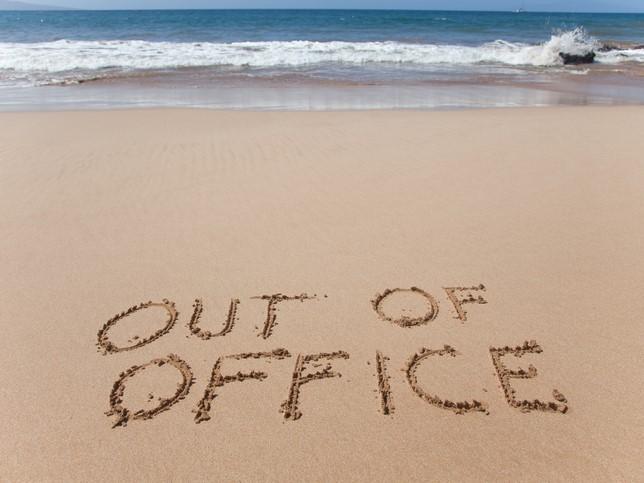There are 168 hours available to each of us in a week. And each of us will often have multiple responsibilities, tasks and needs competing for that available time. This often leads to increased feelings of burnout and decreased feelings of joy, peace and harmony. According to the Maslach Burnout Inventory, burnout occurs when three factors exist at the same time: emotional exhaustion; depersonalisation or cynicism; and a diminished sense of personal accomplishment. Yet we are more empowered to tackle burnout than we think.
To combat burnout, it can be helpful to reflect on how those 168 hours each week are truly being spent, and if our time is invested into not just our work life and responsibilities but also our physical and mental health.
One exercise for this intentional reflection on time spent is the “Actual Time Use v Ideal Time Use” calendar activity. Begin by creating or marking the following on a calendar:
Calendar 1: Actual time use
- Block out regularly occurring events, such as:
- Sleep (from the time you get into bed until the time you get up)
- Work (including commute time if applicable)
- Physical activity/exercise
- Caregiving activities (kids, ageing parents, pets, etc)
- Connection/social activities (time with friends/family, therapy, etc)
- Meals (including prep time)
- Bathroom time (shower, hair/make-up, etc)
- Errands (grocery shopping, doctor visits, petrol station, etc)
- Zoning out (Netflix, video games, scrolling social media, etc)
- Next, colour-code each activity by type of need they fulfil. For example:
- Responsibilities
- Active rest (exercise, social activities, hobbies, sleep)
- Zoning out (Netflix, social media, video games)
When we begin to experience symptoms of burnout, we tend to develop a hyper-awareness of negative experiences while positive experiences become increasingly muted. In other words, we start to scan for negatives rather than positives, leaving us more susceptible to a negative loop of emotional exhaustion, cynicism and a diminished sense of accomplishment. We may say things such as: “I never have time to relax,” or “I’m always doing something for someone else and never have time for myself.”
We also become more susceptible to the belief that burnout is:
- Personal: It’s our “fault”
- Permanent: It will last forever
- Pervasive: It will affect all areas of our life.
To combat burnout, scanning for positives (things going well in our week) or, at a minimum, scanning for areas in our life where we have more control can be helpful. For example, while I may tell myself I never have time to relax, the Screen Time application on my phone tells me I spend up to two hours per day on social media and YouTube. Oops. This is a pocket of time each day that I control. While I’m OK with keeping a little of that zoning-out time, it also alerts me to the fact that I do indeed have time; I’m just not spending it in a way that truly serves me.
That’s where the Ideal Time Use calendar comes in. Realistically, we have certain responsibilities that must be accounted for; but take some time to consider how, in a more ideal version of your world, you might spend the rest of your time. Specifically, consider the “restful” activities you currently engage in and when you engage in them. Do your rest-time activities truly recharge you, or is the time being spent in ways that do not serve you or bring you peace? Often, we engage in zoning-out activities far more than we realise and with little understanding of how little is gained mentally or physically from this time investment. We do benefit from zoning out on occasion, but if the majority of your rest time is spent in this category, it may be contributing to burnout.
Instead, consider scanning for the positives and where you have control. I may be pretty busy most of the time, but I do have a minimum of two hours a day that I can use more effectively for self-care. If I split those two hours of screen time in half and make time for an evening walk, 10 minutes of journaling, a couple of five-minute breaks to stretch during the day, I would still have a little time to zone out while also engaging in more active rest activities that will better address my physical and mental health needs.
The next step is creating your Ideal Time Use calendar. Keep in mind that this is subjective and should align with what actually recharges you the most. However, some things to consider include:
Calendar 2: Ideal time use
- Ideally, your sleep schedule would be a solid block of seven to nine hours each day
- Ideally, 30 to 60 minutes for physical activity (even better if it is in nature) would be blocked off on a minimum of three days each week
- Ideally, there would be time for creativity, self-reflection and connection each week
- Zoning-out activities may make their way on to your Ideal Time Use calendar, but consider if they are in moderation and balanced with more active rest activities
The goal of this intentional reflection is to empower you to better understand the season of life you are in and the impact it has on your well-being. We all undergo seasons that are particularly busy and challenging. This is not a personal failing or our “fault.” It is simply the nature of living. Difficult seasons are not permanent and, with proper supports in place, including connection and time for self-reflection, we can face challenging times with more confidence in our ability to navigate through. The Actual Time Use v Ideal Time Use calendars empower us to determine if there are pockets of time that can be used more advantageously to support a life filled with a few more hours of energy, focus, creativity and connection.
Sara Metz is programme director at Colorado State University Global, US.
If you would like advice and insight from academics and university staff delivered direct to your inbox each week, sign up for the Campus newsletter.




comment